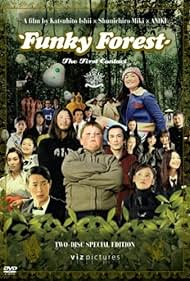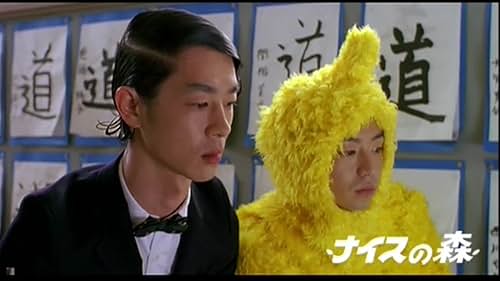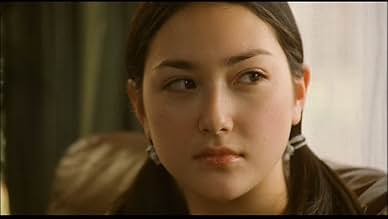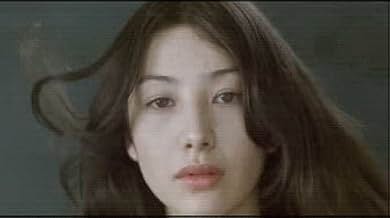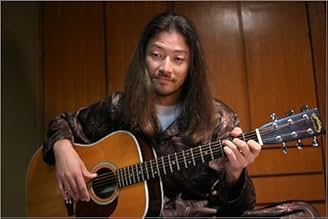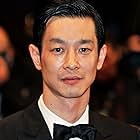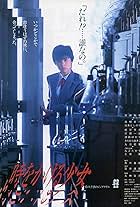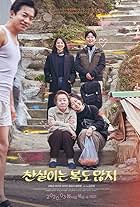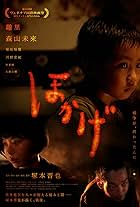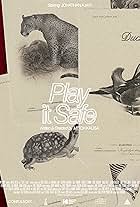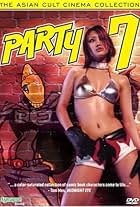Naisu no mori: The First Contact
- 2005
- 2h 30m
IMDb RATING
6.6/10
2.8K
YOUR RATING
An outrageous collection of surreal, short attention span non-sequiturs largely revolving around Guitar Brother, his randy older sibling, and the pair's portly Caucasian brother.An outrageous collection of surreal, short attention span non-sequiturs largely revolving around Guitar Brother, his randy older sibling, and the pair's portly Caucasian brother.An outrageous collection of surreal, short attention span non-sequiturs largely revolving around Guitar Brother, his randy older sibling, and the pair's portly Caucasian brother.
- Awards
- 1 win
- Directors
- Writers
- All cast & crew
- Production, box office & more at IMDbPro
Storyline
Did you know
- Quotes
Shoichi Tanaka: Yo, class Prez! Get serious! 'Cause we're serious, you know. If you don't, there'll be hell to pay. This is a 50/50 relationship.
- ConnectionsFeatured in Rude Tube: WTF?!? (2013)
Featured review
With a project like this, it is as likely that it is a random goof as something with some structure. It could be both.
As this was sent to me by a fellow viewer, and because I am so inclined, I tend to see structure. And what I see I like — a lot. It is essentially a series of sketches, some broken up and scattered throughout. Others continue from or extend situations and characters we know. Perhaps these sketches need to be described a bit, as they are what most people will see.
They are tiresome in their humor. Unless you are Japanese, the satire will be lost. But they are amazingly clever in terms of the imagery: striking, unexpected and sometimes disturbing. With all the mastery in the images, they are surprisingly uncinematic, as if this was made not by real filmmakers but by TeeVee or music video people. There are little dramas of teen angst and performance played out, as apt as any John Hughes movie. But when it comes to this sort of thing, my benchmark is "Lily Chow Chow."
But it is the structure that matters here. The large arc here is the visit to Earth by an alien, we see at the very beginning. What we see is what he would experience of us if he encountered a Japanese high school. The main characters here are three girlfriends and three brothers. Their baseline skits are set in ordinary reality with exaggerated behavior. Layered on that are diverse performances, many of dance that they do that get as abstract as the rest I will describe. Layered on that are their numerous dreams and illustrated stories. And layered on that is the story of and references to making the movie.
Any of these is likely to be less or more abstract. They are woven together by recurring characters (including strange parasitic creatures that can be played musically). At the higher level of the dreams and outer framing, we have the same actors playing multiple roles. I haven't taken the time to map them out as I think there is no special insight other than the quantum blurring.
This is an adventure in exploring new cinema by structure. It is just an experiment, so we shouldn't expect it to change lives. But I can easily see how someone can refine and master these techniques to do so.
Ted's Evaluation -- 3 of 3: Worth watching.
As this was sent to me by a fellow viewer, and because I am so inclined, I tend to see structure. And what I see I like — a lot. It is essentially a series of sketches, some broken up and scattered throughout. Others continue from or extend situations and characters we know. Perhaps these sketches need to be described a bit, as they are what most people will see.
They are tiresome in their humor. Unless you are Japanese, the satire will be lost. But they are amazingly clever in terms of the imagery: striking, unexpected and sometimes disturbing. With all the mastery in the images, they are surprisingly uncinematic, as if this was made not by real filmmakers but by TeeVee or music video people. There are little dramas of teen angst and performance played out, as apt as any John Hughes movie. But when it comes to this sort of thing, my benchmark is "Lily Chow Chow."
But it is the structure that matters here. The large arc here is the visit to Earth by an alien, we see at the very beginning. What we see is what he would experience of us if he encountered a Japanese high school. The main characters here are three girlfriends and three brothers. Their baseline skits are set in ordinary reality with exaggerated behavior. Layered on that are diverse performances, many of dance that they do that get as abstract as the rest I will describe. Layered on that are their numerous dreams and illustrated stories. And layered on that is the story of and references to making the movie.
Any of these is likely to be less or more abstract. They are woven together by recurring characters (including strange parasitic creatures that can be played musically). At the higher level of the dreams and outer framing, we have the same actors playing multiple roles. I haven't taken the time to map them out as I think there is no special insight other than the quantum blurring.
This is an adventure in exploring new cinema by structure. It is just an experiment, so we shouldn't expect it to change lives. But I can easily see how someone can refine and master these techniques to do so.
Ted's Evaluation -- 3 of 3: Worth watching.
Details
- Release date
- Country of origin
- Languages
- Also known as
- Funky Forest: The First Contact
- Production company
- See more company credits at IMDbPro
- Runtime2 hours 30 minutes
- Color
Contribute to this page
Suggest an edit or add missing content

Top Gap
By what name was Naisu no mori: The First Contact (2005) officially released in Canada in English?
Answer